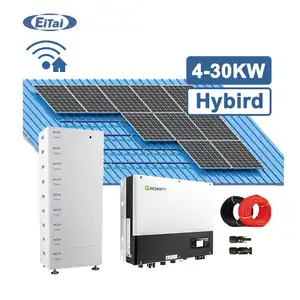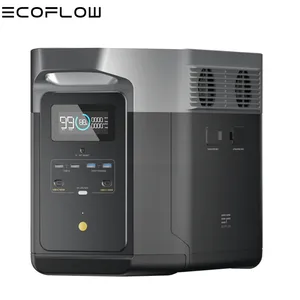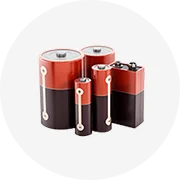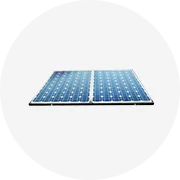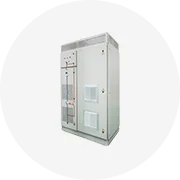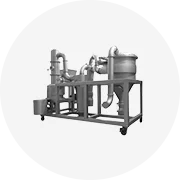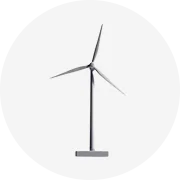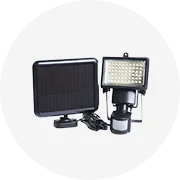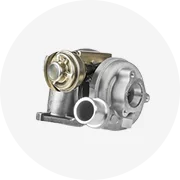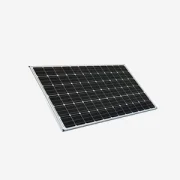Popular in your industry























































Related Searches:









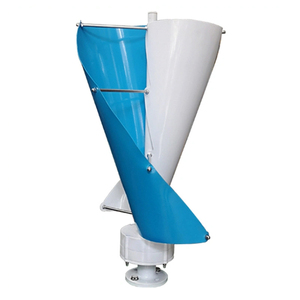











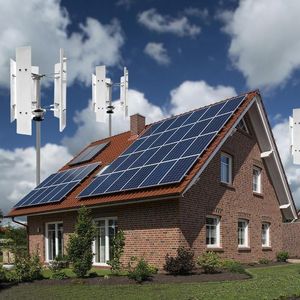












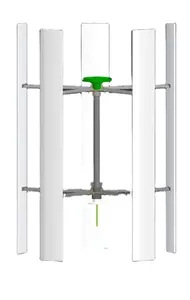















































































Top categories
About 10kw vertical axis wind turbine
As the quest for sustainable energy solutions intensifies, the spotlight turns to innovative technologies that promise efficiency and adaptability. Among these, the 10kW Vertical Axis Wind Turbines (VAWTs) are carving a niche in the renewable energy landscape. These turbines, with their unique vertical orientation and ability to harness wind from any direction, are not just an answer to spatial constraints in urban settings but also a testament to the evolution of wind energy technology. This article delves into the rise of 10kW VAWTs, exploring their design, market emergence, and the advantages they offer over traditional horizontal axis counterparts, paving the way for a more sustainable and energy-efficient future.
Understanding Vertical Axis Wind Turbines (VAWTs)

Vertical axis wind turbines (VAWTs) are characterized by their rotor's vertical orientation, rotating around a central shaft with vertically aligned blades. Unlike their horizontal counterparts, VAWTs harness wind energy through the rotation of their rotor, which is then translated into electrical energy by a connected generator. These turbines come in various designs, each with unique operational principles and performance characteristics.
The two main types of VAWTs are Savonius and Darrieus turbines. Savonius turbines feature a helical blade design resembling DNA strands, operating on the principle of flow resistance. They capture wind using a broad, solid area on the blades, which induces rotation through dynamic pressure and aerodynamic 'drag.' Conversely, Darrieus turbines, often likened to an 'egg-beater,' employ curved or straight wings attached to the rotor shaft. These turbines leverage 'lift' aerodynamic forces, where wind flow creates a differential pressure that propels the blades, allowing them to potentially rotate faster than the wind speed.
VAWTs are generally smaller than horizontal axis wind turbines, which contributes to their suitability for urban environments due to lower noise levels and better tolerance to turbulent winds. While they may not match the energy efficiency and power output of horizontal turbines, VAWTs offer flexibility in installation locations and are less impacted by certain regulatory constraints, making them a viable option for diverse applications.
The Emergence of 10kW VAWTs in the Market
The market for small wind turbines is witnessing a notable shift with the increasing adoption of vertical axis wind turbines (VAWTs), particularly in the 10kW range. These turbines are gaining traction due to their suitability for a variety of commercial applications and rural settings. Unlike the more traditional horizontal axis wind turbines (HAWTs) that have been prevalent for over three decades, the 10kW VAWTs represent a more recent innovation in wind technology. Their design allows for installation in diverse environments, including farmhouses, remote areas, and even urban locales. The vertical axis design is particularly advantageous in areas with variable wind directions and is an effective solution for sustainable electricity production close to the point of energy consumption. As the market evolves, the 10kW VAWTs are becoming a more common sight, contributing to the growth of decentralized energy systems and offering a flexible approach to harnessing wind power.
Comparing Horizontal and Vertical Axis Wind Turbines
Horizontal Axis Wind Turbines (HAWT) and Vertical Axis Wind Turbines (VAWT) represent two distinct designs in harnessing wind energy. HAWTs are the more traditional model, characterized by their horizontal main rotor shaft and electrical generator at the top of a tower. In contrast, VAWTs have a vertically oriented rotor shaft, which offers a different set of advantages and challenges.
The comparison between HAWTs and VAWTs is significant when considering installation, as VAWTs do not need to be oriented towards the wind to be effective. This can simplify the design and reduce the need for a yaw mechanism. VAWTs are often considered more suitable for areas where wind direction is highly variable.
In terms of efficiency, HAWTs typically have been more efficient in converting wind to energy due to their ability to capture higher wind speeds at greater heights. However, VAWTs have made significant strides in design, allowing them to be more competitive, especially in the 10kW range suitable for residential or small-scale commercial use.
The debate of 'Lift vs. Drag' plays a crucial role in the functionality of wind turbines. HAWTs generally rely on lift, generated by wind flowing over the airfoil-shaped blades, to turn the rotor. VAWTs can utilize both lift and drag, which can allow them to start turning at lower wind speeds and be less impacted by turbulence.
When considering the 10kW VAWT, it's important to note that advancements in materials and design have narrowed the performance gap with HAWTs. The 10kW VAWT is now a viable option for those seeking sustainable energy solutions, particularly in urban or residential settings where space constraints and wind conditions favor the VAWT design.
Applications of 10kW Vertical Axis Wind Turbines

The 10kw vertical axis wind power generator turbine represents a significant advancement in renewable energy technology. Its design allows for a wide range of applications due to its compact rotation radius, which requires less space than traditional wind turbines. This makes it suitable for urban environments where space is at a premium. Additionally, the turbine's efficient power generation curve and expanded effective wind speed range from 2.5 to 25m/s enable it to harness wind energy more effectively. This versatility ensures that it can be deployed in various settings, from small-scale residential projects to larger community-based installations. The turbine's safety features, including a robust brake device, ensure reliable operation in diverse weather conditions, further broadening its applicability. Its low noise profile also makes it a neighbor-friendly option, contributing to its suitability for populated areas.
Key Features of 10kW VAWTs
The 10kW vertical axis wind turbine (VAWT) stands out with its innovative design that enhances safety and performance. It employs vertical blades and a triangular double-fulcrum structure, significantly mitigating risks associated with blade detachment or ejection. Its horizontal rotation, paired with an aircraft wing-inspired design, minimizes noise, making it barely noticeable in natural settings.
This turbine is engineered to withstand strong winds due to its horizontal rotation and robust triangular double fulcrum design, which ensures it only faces minimal wind pressure even during high wind events. The compact rotation radius of the turbine allows for space efficiency while simultaneously boosting power efficiency.
A gentle power generation curve characterizes the turbine, enabling it to produce up to 30% more power compared to other wind turbines. It operates effectively across a broad wind speed range from 2.5 to 25m/s, thanks to a specialized control principle that maximizes wind resource utilization for higher energy output.
The turbine is equipped with a braking device that includes speed protection and options for both manual mechanical and electronic brakes. Maintenance is simplified due to the absence of a gearbox and steering mechanism, requiring only biannual checks, which underscores the turbine's operational efficiency and low maintenance needs.
Materials and Design Innovations
The evolution of vertical axis wind turbines (VAWTs) has been significantly influenced by breakthroughs in materials and design. The introduction of composite materials such as carbon and glass fibers has been a transformative step in the construction of VAWTs. These composites offer enhanced strength and reduced weight, which are crucial for the efficiency and longevity of the turbines.
In addition to material innovations, the design of VAWTs has been refined through the use of advanced manufacturing techniques. Additive manufacturing, or 3D printing, has emerged as a pivotal technology in this space. It allows for the creation of complex components with high precision and has streamlined the production process, leading to reductions in both time and cost.
These material and design advancements have culminated in the development of more efficient and reliable 10kW VAWTs. The turbines' improved performance is a testament to the potential of these innovations to contribute to sustainable energy solutions. As a result, 10kW VAWTs are becoming an increasingly popular choice for those seeking environmentally friendly energy sources.
Advantages of 10kW VAWTs for Sustainable Energy Solutions

Vertical axis wind turbines (VAWTs), particularly the 10kW models, offer a suite of advantages for sustainable energy solutions. These turbines are designed with fewer moving parts, reducing the likelihood of component wear and subsequent breakdowns. The strategic placement of the gearbox and generator at the base of the tower minimizes the need for strong supporting structures and eliminates the necessity for pitch and yaw controls.
VAWTs are omnidirectional, capable of harnessing wind from any direction without the need for reorientation. This feature allows for consistent energy generation even in variable wind conditions, making them particularly suitable for areas with gusty winds. Their scalability is another benefit, as they can be sized down for urban settings where space is at a premium.
Economically, VAWTs are less expensive to produce than their horizontal counterparts and offer ease of installation. They are also portable, can operate in extreme weather conditions, and are subject to fewer height restrictions, which can be a significant advantage in certain locales. Additionally, the lower-speed blades present a reduced risk to wildlife and humans, and the turbines operate quietly, making them neighbor-friendly in residential areas.
In terms of energy efficiency, VAWTs can be installed in denser arrays compared to horizontal turbines, which can lead to increased power generation over a given area. Their low center of gravity enhances stability, an essential feature for floating offshore installations. These attributes underscore the potential of 10kW VAWTs to contribute significantly to sustainable energy infrastructures.
Installation and Maintenance Considerations
The installation and maintenance of vertical axis wind turbines (VAWTs), such as the 10kW models, are designed with simplicity and reliability in mind. These turbines feature a minimalistic design, eliminating the need for a gearbox and complex adjustment mechanisms, which are often prone to failures. This approach significantly reduces the likelihood of malfunctions and the necessity for frequent maintenance. The turbines are constructed with durable aluminum alloy, ensuring a design life that spans two decades, and are treated with high-grade anti-corrosion measures to withstand various environmental conditions.
Maintenance requirements for these VAWTs are minimal, typically involving an annual check-up, which is a lower maintenance demand compared to more complex turbine systems. The design also incorporates safety measures, including both electronic and mechanical braking systems, to halt the turbine during high wind speeds or for maintenance purposes. This ensures that the turbines operate safely even in extreme weather conditions. Furthermore, the turbines are engineered to operate quietly, with noise levels below 45dB at an 8m/s wind speed, making them suitable for urban installations where noise pollution is a concern.
Case Studies: Successful Implementations via Alibaba.com
Navigating Alibaba.com for 10kW VAWT Purchases
When considering the purchase of a 10kW vertical axis wind turbine (VAWT) on Alibaba.com, buyers should focus on the specifications and features that align with their energy needs. It's essential to assess the starting wind speed requirements of the turbine to ensure compatibility with the local wind conditions. Additionally, the total power load that the turbine will need to support is a critical factor. For residential use, turbines around 3kW to 5kW are commonly recommended, but for those requiring more robust solutions, a 10kW system may be ideal.
Potential buyers should also weigh the options between different tower types, such as guy cable towers and standalone towers, to determine which would best suit their installation site. Delivery timelines can vary, typically around 10 days, but larger orders may require up to 25 days. Packaging for shipment is designed to withstand tough handling and transport, ensuring the product arrives in optimal condition.
Payment terms on Alibaba.com are flexible, with options like T/T, Western Union, and Alibaba Trade Assurance, the latter being preferred for added security and convenience. A standard payment structure involves a 30% advance with the balance due before shipment. For larger transactions exceeding USD 50,000, letters of credit may also be accepted. These details help ensure a secure and satisfactory purchasing experience on Alibaba.com for those investing in 10kW VAWT systems.
Conclusion
In conclusion, the 10kW Vertical Axis Wind Turbines represent a significant leap forward in the realm of renewable energy. With their innovative designs, they offer a sustainable and efficient solution for a wide range of applications, from urban rooftops to rural landscapes. The advancements in materials and design, including the use of composite materials and additive manufacturing, have enhanced their performance and reliability. The turbines' omnidirectional capability, coupled with their economic and environmental benefits, positions them as a compelling choice for those seeking to reduce their carbon footprint. Installation and maintenance are simplified, and platforms like Alibaba facilitate the global distribution and accessibility of these turbines. As we have seen, the 10kW VAWTs are not just a product of innovation but a cornerstone for future sustainable energy infrastructures, proving that small-scale wind solutions can make a significant impact on our energy needs.

